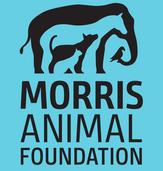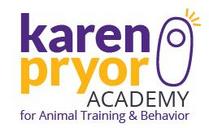2024 CABC Meeting – Both in-person and streaming options available!
Where the animal behavior experts gather.
2024 CABC Meeting
Theme: Aggression
Save the Dates: October 18-20 at Anti-Cruelty Society, 157 W Grand Ave. in Chicago, IL.
2024 Agenda coming soon!
2024 Confirmed Speakers:
- Michael Shikashio – Click HERE for Bio
- Jeannine Moga, MA, MSW, LCSW – Click HERE for Bio
- Kristin Klebba, VTS – Click HERE for Bio
- Hagar Hauser, DVM, DACVB – Click HERE for Bio
- Dr. Sheilah Robertson BVMS (Hons), PhD, DACVAA, DECVAA, DACAW, DECAWBM (WSEL), CertVA, FRCVS – Click HERE for Bio
- Jennifer Shryock B.A. CDBC – – Click HERE for Bio
2024 Topics:
- Behavioral Euthanasia- Impact on the Client and Vet Team
- Navigating Difficult Family Dynamics with Behavioral Cases
- Interactive Aggression Session
- Anxiety Reducing Approaches to Restraint
- Cat/Dog- Pain and Aggression (esp. as it relates to pain)
- Aggression and Sedation Medications/PVPs
- Behavioral Euthanasia
- Basic Information for Families and Dogs
We have special pricing through Best Western River North! Please follow this LINK to book your hotel stay today!
Thank you to our 2022-2023 Sponsors!
Past Attendee Feedback
I had a great time! Looking forward to attending again some point in the future. – 2023 Attendee
Great conference overall. Nice new location – 2023 Attendee
I really enjoyed Chicago more than Las Vegas. Everything was in walking distance for the most part. More places to eat. Loved the restaurant in the hotel. It was so much easier to get around or even relax. I also think the venue was great. It was large enough for all the attendees. It was closer together. Last year, I felt awkward turning back and forth to try to watch the speaker and the screens. I also enjoyed the topics more this year. Overall, I enjoyed last year and this year and cannot wait until next year! – 2023 Attendee
The CABC is my favorite conference of the year! I love that there is a single track and we all get to learn everything. I can’t wait for the event next year in Chicago! – 2022 Attendee
Thank you for putting this conference together. It is refreshing to be surrounded by others who believe in the importance of expanding their knowledge of animal behavior. This conference reinforces my commitment to provide more compassionate care for my patients. – 2022 Attendee
This was my first CABC conference and I really enjoyed it. Got new ideas and some confirmation that I am on the right track. – 2022 Attendee
The 2019 conference received excellent reviews. It was one of a kind!
The CABC is an event like no other. It includes trainers, techs, and vets in each and every session. This creates a camaraderie among those of us fascinated by animal behavior no matter which level we practice on. Each year there are two days of scientific sessions focused on a particular issue: geriatric pets, for example, or adolescent animals. Presentations explore the breadth and depth of information available on each issue, with the main emphasis on clinical management of our cases. The conference is always well attended, well managed, and loads of fun. I always bring home new ideas for my patients, and that reenergizes my practice.
Terri Derr, DVM 2018
Check us out “AVSAB and SVBT Clinical Animal Behavior Conference in Top 10 for Best Behavior Conferences”
The conference is open to all behavior professionals but if you are not already a member and would like to join the AVSAB, please click this link: Join AVSAB!
We look forward to seeing you all there!
Have Questions? Please contact us at [email protected] for assistance.









